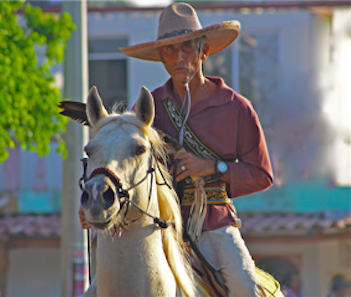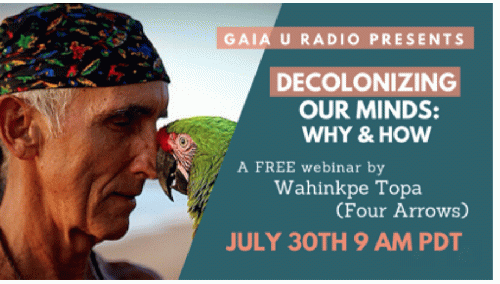I have mentioned "worldview" often. I conclude by saying that worldview reflection in consideration of the two existing worldviews, the dominant one and the Indigenous one, holds the solution to bring our world back into balance. With this in mind, I offer a contrasting worldview chart that can help us replace the beliefs that are killing us with those that can save us. The more individuals who move from the left side to the right side, the closer we get to a critical mass. When this happens, the worldview will take over our institutions and social systems. Whether we can accomplish in this life time or not, we must continue so we can be thought of as "good ancestors" by those who may survive or by future generations.
References
Fry, D. P. (2006) The Human Potential for Peace: An anthropological challenge to assumptions about war and violence New York: Oxford University Press
Fry, D. P. (2013) "The evolution of cooperation: What's war go to do with it?" Reviews in Anthropology. 42, 2.
Gat, A. (2016). War in Human Civilization. Oxford: Oxford University Press (2016).
Heikkinen, N. (March 4, 2915) "Destruction paid in Plague: Clearing forests allows human diseases to flourish" in Scientific American.
Klinger, L. (2008) Ecological evidence of large-scale silviculture by California Indians" in Four Arrows Ed), Unlearning the Language of Conquest: Scholars Expose Anti-Indianism in America. University of Texas Press.
Magni, G. (2016) "Indigenous knowledge and implications for sustainable development agenda. UNESCDOC. https://unesdoc.unesco.org/ark:/48223/pf0000245623
Mann, C. (Dec. 2005) "Native Intelligence" in Smithsonian Magazine
Nolan, P. (2003). "Toward an Ecological-Evolutionary Theory of the Incidence of Warfare in Preindustrial Societies, Sociological Theory" 10.1111/1467-9558.00172, 21, 1, (18-30)
Ohio State University. "Standing Tall: Plains Indians Enjoyed Height, Health Advantage." ScienceDaily. ScienceDaily, 29 May 2001.
Van der Dennen, J. M. G. (2004) "Three works on war" InOtterbein, K. How War Began College Station: Texas A&M Press
(Note: You can view every article as one long page if you sign up as an Advocate Member, or higher).







